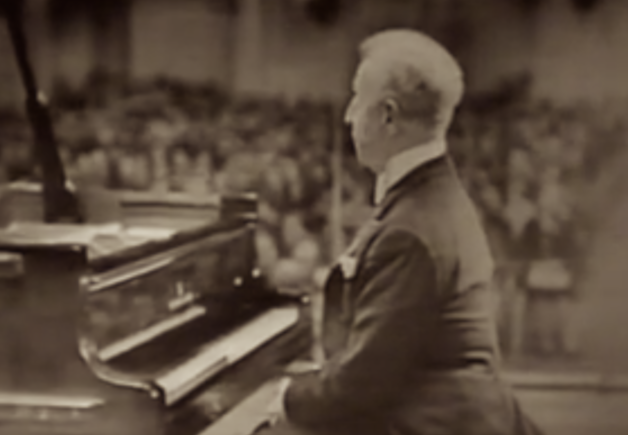This probably sounds crazy, but the best saxophone lesson I’ve ever taken was from somebody who didn’t even play the instrument. It was given to me by Frances Marsden, my first Alexander Technique teacher. How is it possible (you might ask) that somebody who knows nothing about playing the saxophone could help me become a better saxophone player?
Ironically enough, it is precisely because Frances knew nothing about playing the saxophone that she was able to help me so much. She did something very simple, but immediately practical: She observed what I was doing as I played, then asked questions about it.
She would ask, for example, “Is it necessary for you to tense and raise your left shoulder as you play?” I would stop for a moment and think, then reply, “No, it’s not at all necessary. It doesn’t help my sound or my fingering technique.” She would continue, “Let’s see what would happen if you don’t do that.” And of course, I found that if I didn’t do that, I would play better.
We went on and on like this. She, rather innocently asking questions and I, stopping to observe and reconsider my technique. You see, Frances didn’t know what was necessary to produce sound or create technique with the saxophone. She was just observing the tension I was creating as I played, and asking me if it was necessary. Sometimes it was, but more often than not it wasn’t.
She became fascinated by the whole process as well. With a childlike curiosity, she would observe and ask based upon a genuine desire to understand what was involved in playing the saxophone. She acted as a sort of a mirror for me: I was able to change many of the habits of unnecessary tension I was bringing into my saxophone playing.
By the time I’d take this remarkable “saxophone” lesson, I’d already taken about 10 Alexander lessons from Frances. I came to her because of some serious coordination issues I was having at that time that forced me to take time off from professional performance. In the first lessons we didn’t even look at how I was playing the saxophone. Instead we dealt with my general coordination: How I sat, stood, used my arms, maintained balance, breathed, walked, etc.
It was in these first lessons that I gained a much clearer understanding and kinesthetic sense of how my habits of tension were manifesting themselves. This was a good strategy, because had we started right in on the saxophone, I would have been so emotionally tied up into my own playing (and my beliefs about playing!) that I wouldn’t have been able to be truly open to seeing what my habits were.
But after significantly refining my skills of self-observation through my lessons (and making noticeable improvements in my overall coordination and balance), Frances thought it was time we addressed the saxophone directly.
Now, mind you, my saxophone playing was already beginning to improve quite measurably just from improving my overall coordination. I was finding a great deal more ease, consistency, and most important: optimism.
This is no small point. You see, many “saxophone specific” problems are really just problems of balance and coordination. Improve your balance and coordination, and indirectly, you improve your saxophone playing.
Here’s what I learned in that Alexander/saxophone lesson about my saxophone playing habits:
- I tighten my neck as I jut my face forward (especially when playing altissimo)
- I tighten across my chest as I lift my left shoulder up towards my ears
- I pull my right shoulder downward toward the left side of my pelvis, and pull the left side of my pelvis upward toward my right shoulder
- I hyperextend my right leg, throwing my knee backwards into a “lock”.
- I throw my head back as I open my mouth, gasping noisily as I inhale
- I over-extend my left wrist (bending it backwards), especially as I play up in the palm keys.
If you saw me, I probably looked like many saxophone players do. Most of the above habits are so subtle, that many saxophonists and saxophone teachers would never notice them. (Frances couldn’t immediately see some of them , but she could easily feel them with her hands!) Many saxophonists get desensitized to noticing the habitual patterns of unnecessary tension that many (even great) saxophonists have.
For this reason, it’s helpful to have a fresh set of eyes. Somebody who might not know the saxophone, but knows very well the workings of the human organism.
After having that remarkable lesson, I was able to develop a wonderfully useful strategy for improvement: Simply stop carrying out some of these habits. To be honest, that takes a considerable conviction, persistence and strategy, not to mention the investment of time. (But the rewards are so consistent, that it is easily worth it.)
To make a very long story short, I’ve since been able to rid myself of theses problems and am not only playing professionally again, but I’m also playing better than ever before. It all begins with changing your beliefs about what it takes to play, and then cultivating an ability to observe and to ask the right questions. That’s where the help of a good teacher comes into play.

